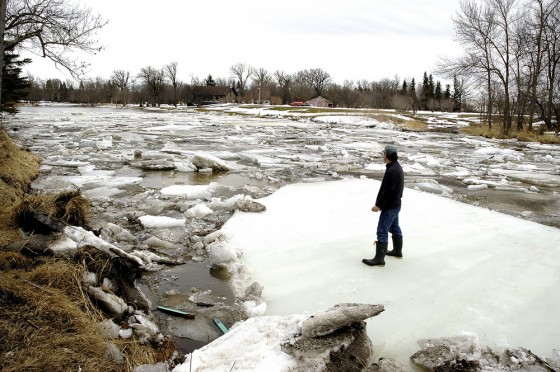After a harsh, cold winter, the clear, sunny skies and rising temperatures of spring are much appreciated. Businesses, however, also need to be ready for the possibility of flooding that may result from heavy rains combined with melting ice and snow.
The National Oceanic and Atmospheric Administration (NOAA) notes that flooding causes more damage in the United States than any other weather-related event. On average, flooding causes $8 billion in damages and 89 fatalities annually. Warming weather also often brings ice jams along rivers, streams and creeks, which can cause further flooding.
“In addition to the threat of floods that occur when severe weather hits, snow and ice have been piling up in many areas of the U.S. this winter,” Bill Boyd, senior vice president with CNA Risk Control, said in a statement. “When temperatures rapidly increase, so does the rate at which snow and ice melt…” which can create serious problems for those heavily affected this winter. “As spring temperatures begin to rise, it’s imperative for businesses to create emergency plans for flooding, which could cause costly property damage or disrupt operations,” he said.
According to NOAA:
Snowmelt and the breakup of river ice often occur at about the same time. Ice jams often form as a result of the sudden push exerted on the ice by a surge of runoff into the river associated with snowmelt. Ice jams can act as dams on the river that result in flooding behind the dam until the ice melts or the jam weakens to the point that the ice releases and moves downstream. A serious ice jam will threaten areas upstream and downstream of its location. Six inch thick ice can destroy large trees and knock houses off their foundations. Once an ice jam gives way, a location may experience a flash flood as all the water and debris that was trapped, rushes downstream.
CNA offers these tips for businesses to minimize loss during the thawing season:
• Create a flood preparation plan.
• Keep water out with barriers, sandbags and other devices.
• Relocate materials from lower levels. In some cases, this may simply mean placing stored items on one or two pallets, or moving items from lower shelves or racks to upper levels.
• Review shutdown procedures for affected processes, especially hazardous processes.
• Check to make sure drainage, including roof drains, are open and flowing freely.
Thaw Edition tools, checklists and bulletins, can be found at www.cna.com/actnow.

